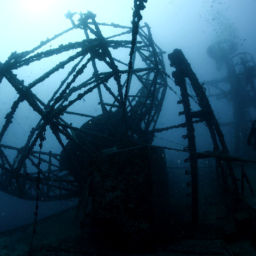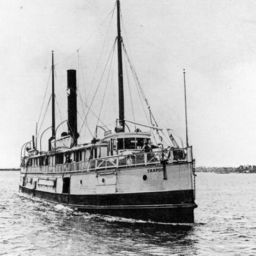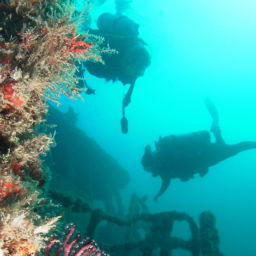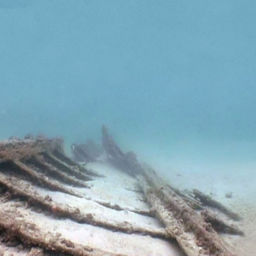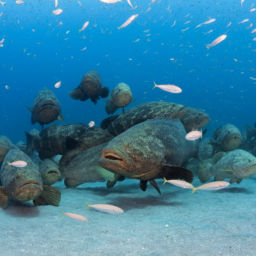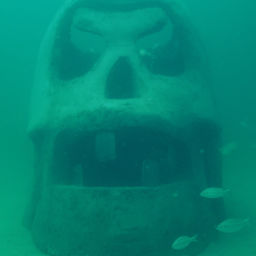There are 12 Underwater Archaeological Preserves in Florida, scattered from the northwestern Panhandle down to the Florida Keys. Today we visit the Half Moon.
History of the Half Moon
Off the coast of Miami in 1930, a storm battered the hulk of an old yacht in the middle of the night. Called Half Moon, the yacht had been floating cabaret and fishing barge. On its last night afloat, it succumbed to the waves, settling onto the sand off Key Biscayne near Bear Cut. The event was hardly noticed at the time, but a storied racing yacht had met its end.
Twenty-two years before, the yacht lived a different life. In 1908, Krupp Germaniawerft Company in Kiel, Germany, launched the racing yacht Germania. The vessel was more than 150 feet (46 m) long, made of chrome-nickel steel and had a schooner rig. It was a wedding present for Bertha Krupp, for whom the “Big Bertha” guns of World War I were named. A decorated yacht known for its speed, Germania won the coveted Kaiser’s Cup, one of the day’s most famous races. Unfortunately for its owners, the Germania was in Southampton filling its water tanks when war broke out between Great Britain and Germany in 1914. British authorities confiscated the yacht, and imprisoned the crew.
The Half Moon
Germania went through several owners, including former Secretary of the Navy Gordon Woodsbury, who bought it in New York and renamed it Half Moon. He refitted the yacht with the latest furnishings, including a piano and an extravagant dining room. Off the coast of Virginia, Woodsbury’s yacht hit a terrible storm, lost a man overboard and had to be towed in. Woodsbury later referred to the storm as “the worst experience of my whole life.”
Changing owners, Half Moon found its way to Miami, where it became a restaurant before sinking during a hurricane. It was refloated and was serving as a cabaret and fishing barge when it sank for the last time off Key Biscayne.
Diving the Half Moon
Local diver Terry Helmers of Miami piqued interest in the site. He’d been diving it since the 1980s and after years of research, discovered that it had been called Half Moon. He contacted the Florida Department of State and nominated the site to become one of Florida’s Underwater Archaeological Preserves in 1997. Half Moon became a Preserve in 2000 and joined the National Register of Historic Places in 2001. State archaeologists created a website, videos, an underwater guide and a brochure to help the public interpret the site.
“It is a fabulous site,” says Ani Gonzalez, captain and manager at Deco Divers in Miami Beach. “Half Moon is full of sea life, and it gives visitors a chance to see an actual historic shipwreck instead of an artificial reef.” The site is especially suited for snorkelers because of its depth. Gonzalez also says, divers and snorkelers “should try to visit Half Moon on incoming high tide for the best conditions.”
Visitors to the site will find marine life such as damselfish, sergeant majors, spiny lobster, bristle worms, angelfish and porcupinefish. They can also examine the remains of the hull from bow to stern and see portholes, a skylight, railing, a hatch, and the helm station. The site is in 8 to 10 feet (2.4 to 3 m) of water. There is often only three or four feet of water over the shipwreck, so approach with caution when boating. Mooring balls are in place to avoid using anchors that might damage the site.
As with other historic shipwrecks in Florida, Half Moon is protected by law, so visitors should leave the site and its artifacts in place for future generations. To learn more about Half Moon or Florida’s other Underwater Archaeological Preserves visit museumsinthesea.com.






